Home>Gardening & Outdoor>Outdoor Recreation & Activities>How To Do Flips On A Trampoline
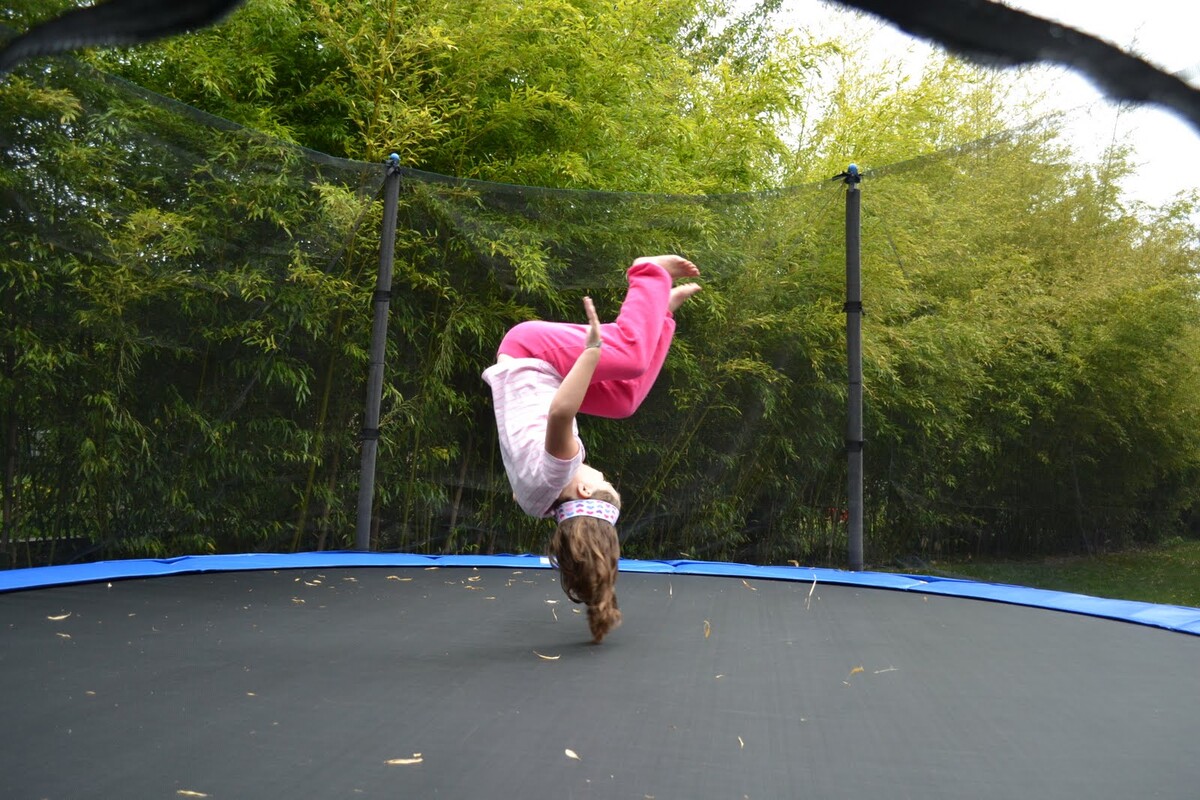

Outdoor Recreation & Activities
How To Do Flips On A Trampoline
Modified: May 6, 2024
Learn how to safely perform flips on a trampoline with our expert tips and techniques. Join the fun of outdoor recreation and activities today! Discover the best practices for mastering trampoline flips.
(Many of the links in this article redirect to a specific reviewed product. Your purchase of these products through affiliate links helps to generate commission for Storables.com, at no extra cost. Learn more)
Introduction
Are you ready to take your trampoline skills to new heights? Learning how to do flips on a trampoline can be an exhilarating experience, but it's essential to approach this activity with the right knowledge and techniques. Whether you're a beginner eager to master the front flip or an experienced trampolinist aiming to perfect advanced maneuvers like the 720 or 1080, this guide will equip you with the essential tips and precautions to ensure a fun and safe trampolining experience.
Trampoline flips are not only a thrilling display of acrobatic prowess but also a fantastic way to build strength, coordination, and confidence. However, it's important to remember that trampolining, especially when attempting flips, requires caution and proper technique to prevent injuries. In this comprehensive guide, we will explore the foundational warm-up exercises, basic and advanced flip techniques, landing strategies, and the crucial role of supervision and spotting.
As we delve into the exciting world of trampoline flips, it's crucial to prioritize safety at every step. By adhering to the safety precautions and techniques outlined in this guide, you can embark on your trampolining journey with confidence and a solid understanding of the fundamental principles that underpin successful and injury-free flips. So, let's bounce into the world of trampoline flips and discover the exhilarating art of aerial acrobatics!
Key Takeaways:
- Mastering trampoline flips requires prioritizing safety, proper warm-up, and gradual progression from basic to advanced maneuvers. Collaboration and supervision play crucial roles in ensuring a secure and enriching trampolining experience.
- Effective landing techniques, clear communication, and gradual autonomy in supervision contribute to a safe and fulfilling trampolining journey. Embrace each flip as an opportunity for growth, learning, and the seamless fusion of athleticism and artistry.
Read more: How To Front Flip On A Trampoline
Safety Precautions
Before diving into the exciting realm of trampoline flips, it’s paramount to prioritize safety to mitigate the risk of injuries. Here are essential safety precautions to observe:
- Supervision: Never attempt trampoline flips without supervision, especially if you’re a beginner or practicing advanced maneuvers. An experienced spotter can provide guidance and intervene if necessary, ensuring a safer trampolining experience.
- Proper Equipment: Ensure that the trampoline is in good condition, with intact springs, a sturdy frame, and a safety net enclosure. Additionally, wear appropriate athletic attire and consider using specialized trampolining shoes for enhanced grip and stability.
- Warm-Up: Prioritize a thorough warm-up routine to prepare your muscles and joints for the dynamic movements involved in trampoline flips. Engage in light cardio, stretching, and mobility exercises to reduce the risk of strains and sprains.
- Skill Progression: Progress gradually from basic flips to more advanced maneuvers, allowing ample time to master each technique before attempting the next level. Rushing into complex flips without a strong foundation increases the likelihood of accidents.
- One at a Time: To avoid collisions and maintain a safe environment, limit trampoline use to one person at a time, especially when practicing flips. This reduces the risk of mid-air collisions and landing on or near another individual.
- Weather Conditions: Be mindful of weather conditions, particularly wind, which can affect your stability and trajectory while performing flips. Avoid trampolining during adverse weather to ensure a secure and controlled environment.
- Prohibited Maneuvers: Refrain from attempting flips or tricks beyond your current skill level. Avoid risky stunts or maneuvers that could lead to loss of control and potential injuries.
- Communication: Establish clear communication with spotters and fellow trampolinists to coordinate movements and ensure a safe landing zone. Verbalize your intentions before initiating a flip and confirm that the landing area is clear.
By adhering to these safety precautions, you can cultivate a secure trampolining environment and minimize the inherent risks associated with aerial maneuvers. Prioritizing safety not only fosters a responsible trampolining culture but also allows for a more enjoyable and sustainable pursuit of acrobatic feats on the trampoline.
Warm-Up Exercises
Prior to engaging in trampoline flips, it’s crucial to prepare your body through a series of targeted warm-up exercises. These exercises serve to enhance flexibility, improve blood circulation, and activate the muscle groups essential for executing flips with precision and control. Here are some effective warm-up exercises tailored for trampoline enthusiasts:
- Dynamic Stretching: Begin with dynamic stretches that mimic the movements involved in trampoline flips. Leg swings, arm circles, and torso twists help loosen up the muscles and joints while promoting agility and range of motion.
- Cardiovascular Activity: Engage in light aerobic exercises such as jogging, jumping jacks, or skipping to elevate your heart rate and increase blood flow to the muscles. This prepares the body for the dynamic nature of trampolining while enhancing endurance.
- Lower Body Activation: Perform bodyweight squats, lunges, and calf raises to activate the lower body muscles, including the quadriceps, hamstrings, and calves. These exercises help improve lower body stability and power, essential for propelling yourself during flips.
- Core Strengthening: Incorporate core-strengthening exercises such as planks, Russian twists, and bicycle crunches to fortify the abdominal and oblique muscles. A strong core enhances balance and control, crucial for executing stable and controlled flips.
- Joint Mobilization: Perform gentle joint mobilization exercises to lubricate the joints and enhance their range of motion. Ankle circles, wrist rotations, and shoulder rolls help reduce stiffness and minimize the risk of injuries during trampoline maneuvers.
By dedicating time to a comprehensive warm-up routine, you prime your body for the dynamic demands of trampoline flips, reducing the likelihood of strains, sprains, and other potential injuries. Additionally, incorporating these warm-up exercises into your trampolining regimen can contribute to long-term athletic development and overall physical well-being.
Basic Flips: Front Flip and Back Flip
Mastering the fundamental trampoline flips, namely the front flip and back flip, lays the groundwork for advancing to more complex aerial maneuvers. These flips require a combination of technique, spatial awareness, and confidence. Here’s a breakdown of the key elements and techniques for executing these foundational flips:
Front Flip
The front flip, also known as a forward somersault, involves rotating forward in mid-air before landing back on the trampoline surface. To perform a front flip:
- Takeoff: Begin in a standing position at the center of the trampoline. Bend your knees and swing your arms downward before thrusting them upward to generate upward momentum.
- Tuck and Rotation: As you ascend, tuck your knees towards your chest to initiate the rotation. Maintain a compact tuck position to facilitate a faster rotation and ensure a controlled flip.
- Spotting the Landing: Spot the trampoline surface as you complete the rotation to gauge your landing. Extend your legs slightly before touchdown to absorb the impact and maintain stability.
- Landing: Extend your legs upon contacting the trampoline surface to disperse the impact and regain an upright stance.
Read more: How To Do An Aerial On A Trampoline
Back Flip
The back flip, characterized by a backward rotation in mid-air, demands spatial awareness and a decisive takeoff. Here’s a step-by-step guide for executing a back flip:
- Preparation: Position yourself at the center of the trampoline, adopting a slight crouch to initiate the takeoff. Engage your core and maintain a focused gaze forward.
- Takeoff and Rotation: Propel yourself upward by extending your legs forcefully. Simultaneously, throw your arms backward to initiate the backward rotation. Keep your body tight and compact to facilitate a swift rotation.
- Spotting the Landing: Maintain visual focus throughout the rotation to spot the trampoline surface. Prepare to bend your knees upon nearing the landing phase to absorb the impact and maintain control.
- Landing: As your feet make contact with the trampoline, absorb the impact by bending your knees and extending your arms for balance. Aim to land in a stable and upright position.
Mastering the front flip and back flip forms the cornerstone of trampoline acrobatics, fostering confidence and body awareness. By diligently practicing these basic flips and honing your technique, you’ll lay a solid foundation for progressing to more advanced trampoline maneuvers with poise and proficiency.
Advanced Flips: 360, 720, and 1080
Embarking on the exhilarating realm of advanced trampoline flips introduces a new dimension of aerial artistry and technical finesse. The 360, 720, and 1080 flips represent progressively challenging maneuvers that demand heightened spatial awareness, precise rotational control, and a mastery of body mechanics. Here’s a comprehensive guide to executing these advanced flips with confidence and flair:
360 (Full Twist)
The 360, also known as a full twist, requires a complete 360-degree rotation in mid-air, adding an extra layer of complexity to your trampolining repertoire. Here’s a breakdown of the key elements for executing a 360 flip:
- Takeoff: Initiate the takeoff from a centered and balanced stance, focusing on a powerful and upward thrust to gain sufficient height for the rotation.
- Rotation Technique: As you ascend, initiate the twist by rotating your body along the vertical axis. Maintain a compact and controlled tuck position to facilitate the swift rotation.
- Spotting the Landing: Maintain visual focus to spot the trampoline surface as you approach the completion of the rotation. Anticipate the landing and prepare to extend your body for a controlled touchdown.
- Landing: Extend your body upon contacting the trampoline surface to absorb the impact and regain stability, ensuring a smooth and controlled landing.
720 (Double Twist)
The 720, or double twist, amplifies the rotational challenge, requiring two full twists in mid-air. Executing a 720 flip demands heightened rotational speed and precise body control. Here’s a step-by-step guide for mastering the 720 flip:
- Takeoff and Initial Rotation: Generate powerful upward momentum during takeoff, emphasizing a forceful extension of the legs. Initiate the first twist by rotating along the vertical axis, maintaining a compact and efficient tuck position.
- Mid-Air Control: Sustain the rotational momentum while maintaining spatial awareness. Focus on maintaining a consistent rotational speed and precise body positioning throughout the maneuver.
- Spotting and Landing: Maintain visual awareness to spot the landing zone as you approach the completion of the second twist. Prepare to extend your body for a controlled landing, aiming for stability and balance upon touchdown.
Read more: How To Do A Backflip On A Trampoline
1080 (Triple Twist)
The 1080, or triple twist, represents the pinnacle of rotational complexity, demanding exceptional athleticism and aerial prowess. Executing a 1080 flip requires unwavering focus, precise rotational mechanics, and a mastery of spatial orientation. Here’s a detailed guide to conquering the 1080 flip:
- Powerful Takeoff: Channel maximum power and height during takeoff, emphasizing a forceful and explosive extension of the legs to propel yourself into the triple twist.
- Sequential Twisting: Initiate the first twist immediately upon takeoff, maintaining a compact and controlled tuck position. Sequence the subsequent twists with unwavering focus and rotational speed.
- Visual Acuity and Landing: Maintain visual acuity throughout the triple twist to accurately gauge the landing zone. Prepare to extend your body for a precise and stable landing, ensuring a seamless transition from mid-air rotations to touchdown.
Mastering the 360, 720, and 1080 flips represents a remarkable achievement in the realm of trampoline acrobatics, showcasing exceptional athleticism and aerial artistry. By diligently practicing these advanced maneuvers and honing your rotational control, you’ll elevate your trampolining skills to new heights, embodying the exhilarating fusion of athleticism and artistry.
Landing Techniques
Mastering the art of trampoline flips extends beyond the airborne acrobatics; it encompasses the crucial skill of executing safe and controlled landings. Effective landing techniques are essential for mitigating impact forces, maintaining stability, and preventing injuries. Whether performing basic flips or advanced maneuvers, employing proper landing techniques is paramount. Here’s a comprehensive overview of landing techniques tailored for trampoline enthusiasts:
Body Positioning
Upon completing a flip and approaching the landing phase, it’s vital to maintain a balanced and controlled body position. Extend your legs slightly before touchdown to dissipate the impact forces across a larger surface area, reducing strain on the joints and muscles. Additionally, keeping your arms slightly extended can aid in balance and stability upon landing.
Absorption and Rebound
Upon contacting the trampoline surface, focus on absorbing the impact by bending your knees and hips, effectively converting the downward momentum into controlled deceleration. This absorption phase minimizes the stress on your lower body and facilitates a smoother transition from mid-air maneuvers to a grounded stance. Subsequently, utilize the trampoline’s rebound effect to propel yourself upward for subsequent maneuvers or to maintain the rhythm of your trampolining routine.
Read more: How To Do A Backhandspring On The Trampoline
Spotting the Landing
Maintaining visual focus on the landing zone throughout the aerial maneuver is crucial for anticipating the point of contact with the trampoline surface. By accurately spotting the landing, you can adjust your body positioning and prepare for a precise and controlled touchdown, reducing the risk of awkward landings or loss of balance.
Stability and Recovery
Upon landing, prioritize maintaining stability and balance to ensure a seamless transition from mid-air acrobatics to a grounded stance. Engage your core muscles to stabilize your body and minimize post-landing sway. Additionally, be prepared to adjust your posture and foot placement to regain stability and prepare for subsequent movements or dismounts from the trampoline.
Progressive Practice
Consistent practice and deliberate focus on refining landing techniques are essential for enhancing your trampolining proficiency. Gradually increasing the complexity and height of your flips while maintaining a strong emphasis on controlled landings can significantly improve your overall trampoline performance and reduce the risk of landing-related injuries.
By honing these landing techniques and integrating them into your trampoline routines, you’ll not only enhance your safety and injury prevention measures but also elevate the fluidity and grace of your aerial maneuvers. Effective landings are integral to a comprehensive trampolining skill set, contributing to a fulfilling and sustainable pursuit of acrobatic excellence on the trampoline.
Spotting and Supervision
Spotting and supervision play pivotal roles in ensuring a safe and enriching trampolining experience, particularly when attempting flips and advanced aerial maneuvers. Whether you’re a beginner refining your foundational skills or an experienced trampoline enthusiast venturing into more challenging flips, the presence of a competent spotter and adherence to effective supervision practices are paramount. Here’s an in-depth exploration of the significance of spotting and supervision in the context of trampoline acrobatics:
Read more: What To Do With An Old Trampoline
The Role of a Spotter
An adept spotter serves as an invaluable source of guidance and support, offering critical assistance in assessing your technique, providing feedback, and intervening if necessary to prevent accidents. A spotter should possess a keen understanding of trampoline dynamics, including takeoff and landing techniques, and be capable of offering constructive advice to enhance your flips and maneuvers.
Guidance for Beginners
For individuals new to trampoline flips, the presence of a reliable spotter is indispensable. A spotter can offer verbal cues, physical guidance, and visual feedback to help beginners refine their technique, build confidence, and overcome any apprehensions associated with attempting flips. Additionally, a spotter can assist in the event of incomplete rotations or unexpected deviations from the intended trajectory, mitigating the risk of injuries.
Enhanced Safety Measures
When executing advanced flips such as the 720 or 1080, the involvement of a spotter becomes even more crucial. The spotter can closely monitor the rotational dynamics, spatial orientation, and landing preparations, offering real-time feedback and intervention to ensure a secure and controlled execution of the maneuver. This proactive approach significantly reduces the likelihood of accidents and enhances overall safety.
Supervision Protocols
Effective supervision extends beyond the role of a spotter and encompasses broader safety protocols and oversight. Whether in a recreational setting or a structured trampolining facility, supervision should be comprehensive, encompassing clear guidelines for trampoline usage, adherence to safety precautions, and the presence of trained personnel to oversee trampolining activities.
Read more: How Long Do Trampolines Last
Collaborative Communication
Clear and open communication between trampolinists, spotters, and supervisors is essential for fostering a safe and cohesive trampolining environment. Verbalizing intentions before initiating flips, coordinating movements, and confirming the readiness of the landing zone are integral aspects of collaborative communication that contribute to a secure trampolining experience.
Progressive Autonomy
As trampolinists gain proficiency and confidence in executing flips, the gradual transition towards self-supervision can be facilitated. However, the foundational role of spotting and supervision in the initial stages of learning flips remains indispensable, ensuring a gradual and informed progression towards autonomous trampolining practice.
By acknowledging the pivotal roles of spotting and supervision in trampoline acrobatics and upholding a commitment to collaborative safety measures, trampoline enthusiasts can cultivate a culture of responsible and secure trampolining. The symbiotic relationship between trampolinists, spotters, and supervisors forms the bedrock of a safe, enriching, and sustainable trampolining environment.
Conclusion
Embarking on the journey of mastering trampoline flips is a thrilling and rewarding pursuit that encompasses athleticism, artistry, and a commitment to safety. Whether you’re honing the foundational front and back flips or venturing into the exhilarating realm of 360, 720, and 1080 maneuvers, the art of trampoline acrobatics offers a captivating fusion of physical prowess and aerial finesse.
Throughout this comprehensive guide, we’ve delved into the essential components of trampoline flips, emphasizing the significance of safety precautions, meticulous warm-up exercises, and the progressive mastery of basic and advanced flips. From the precise techniques of takeoff and rotation to the critical aspects of landing and supervision, each facet of trampoline acrobatics contributes to a holistic and enriching trampolining experience.
It’s imperative to underscore the paramount importance of safety in trampoline flips, from the initial stages of learning basic flips to the advanced realms of multiple twists and rotations. Prioritizing proper equipment, supervision, and adherence to safety protocols fosters a culture of responsible trampolining and ensures a secure environment for aerial exploration and athletic development.
Furthermore, the collaborative dynamics between trampolinists, spotters, and supervisors form the cornerstone of a safe and cohesive trampolining community, where effective communication, guidance, and oversight converge to facilitate a fulfilling and secure trampolining experience for enthusiasts of all skill levels.
As you continue to hone your trampoline acrobatics, remember that the journey towards mastering flips is not merely a display of physical prowess but an embodiment of discipline, creativity, and a profound respect for safety. Embrace each flip as an opportunity for growth, learning, and the seamless fusion of athleticism and artistry.
So, whether you’re soaring through a graceful front flip or conquering the exhilarating rotations of a 1080, may your trampoline endeavors be characterized by a harmonious blend of skill, safety, and the sheer joy of defying gravity with finesse and flair.
Now that you've got the hang of flipping on a trampoline, why stop there? Mastering basic and advanced flips is just the beginning. Ready to amp up the excitement and skill level? Our next guide on trampoline tricks dives into spectacular maneuvers that will impress any audience. From simple bounces to intricate aerials, you'll find everything needed to keep friends and family entertained while boosting your trampolining prowess. Don’t miss out on this thrilling opportunity to expand your repertoire!
Frequently Asked Questions about How To Do Flips On A Trampoline
Was this page helpful?
At Storables.com, we guarantee accurate and reliable information. Our content, validated by Expert Board Contributors, is crafted following stringent Editorial Policies. We're committed to providing you with well-researched, expert-backed insights for all your informational needs.
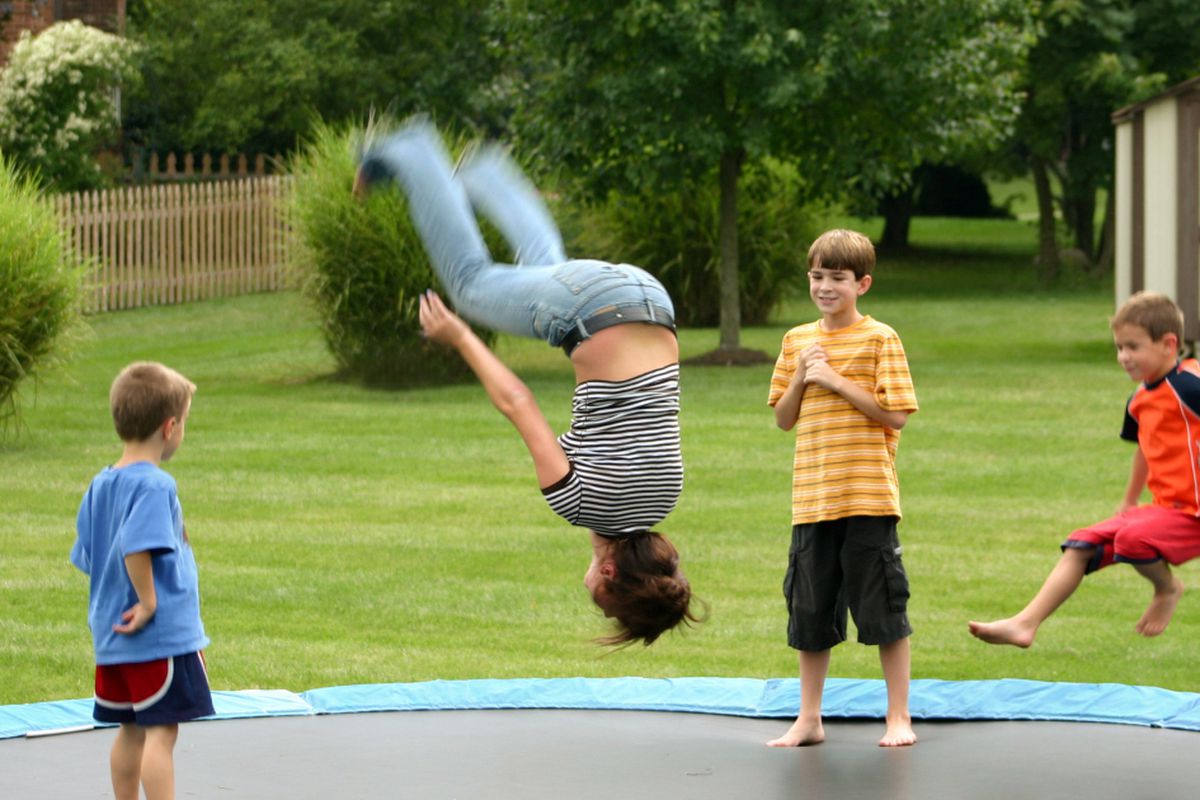
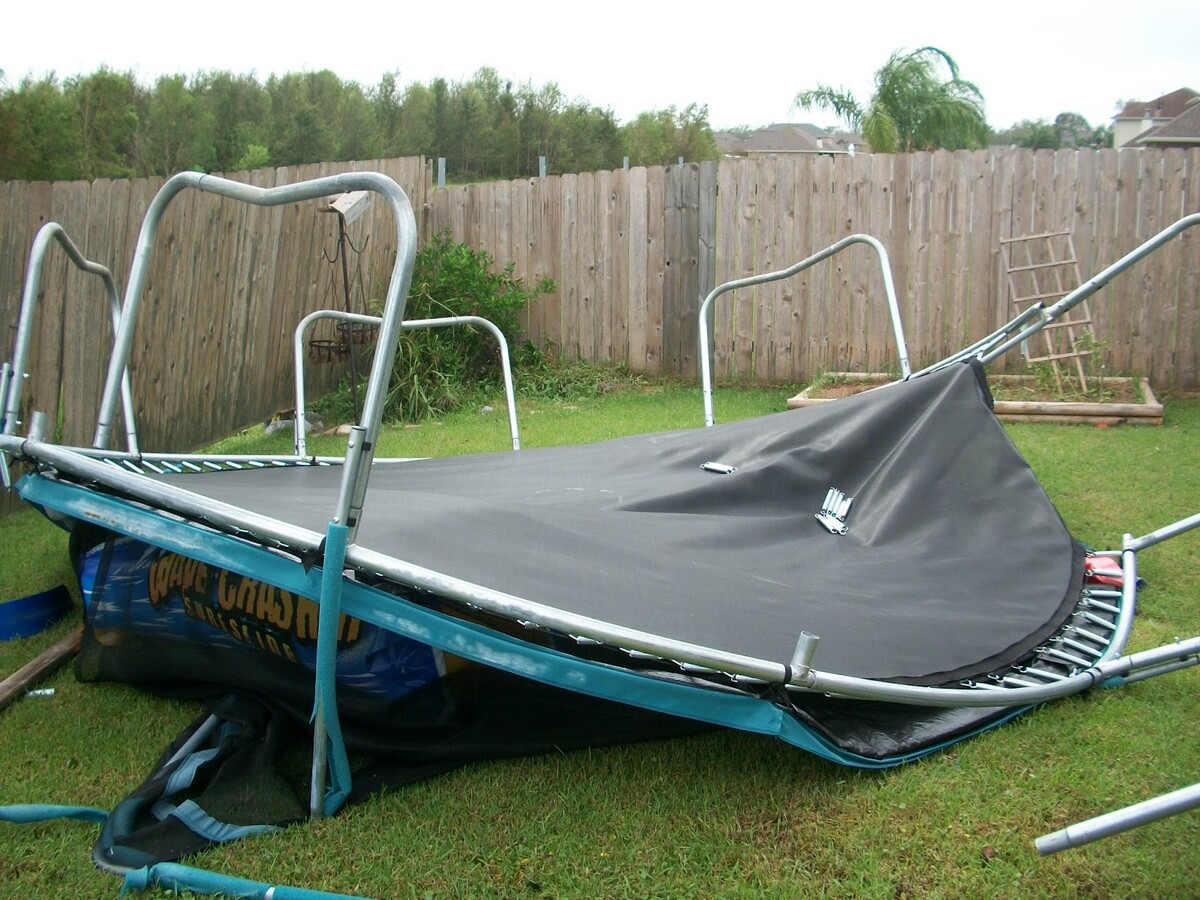
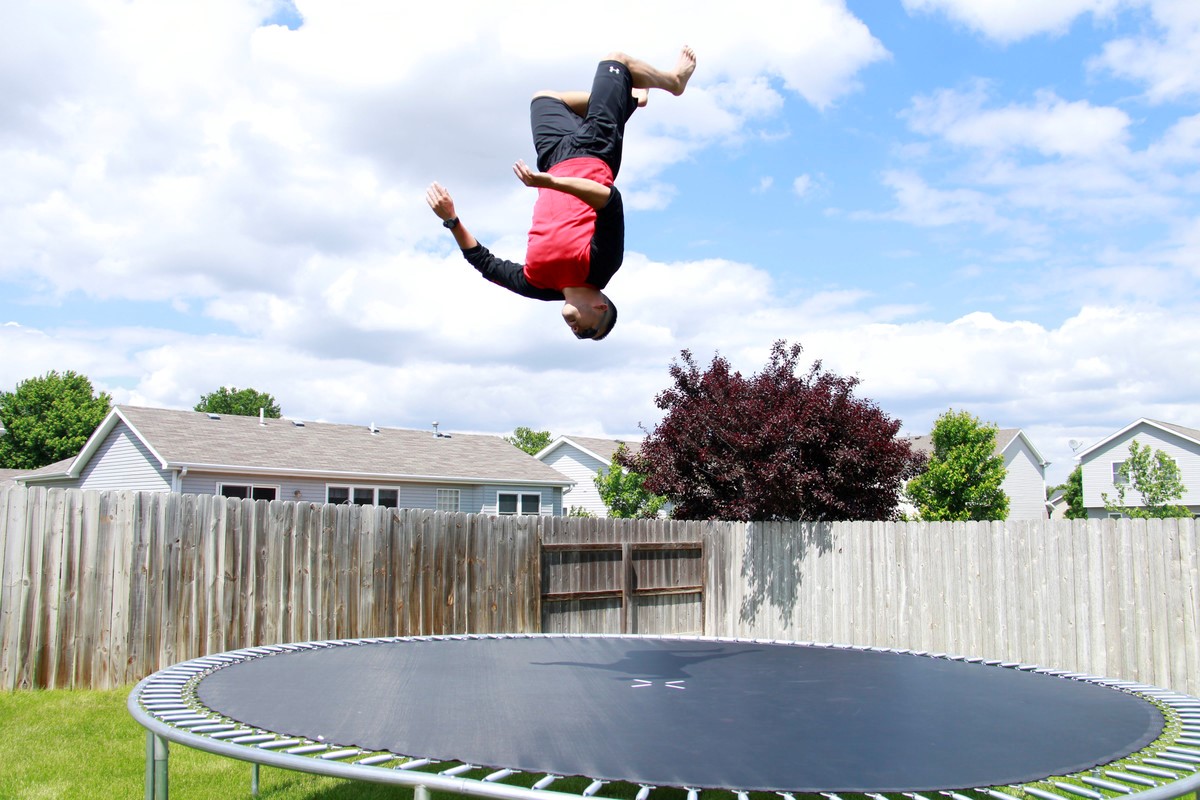
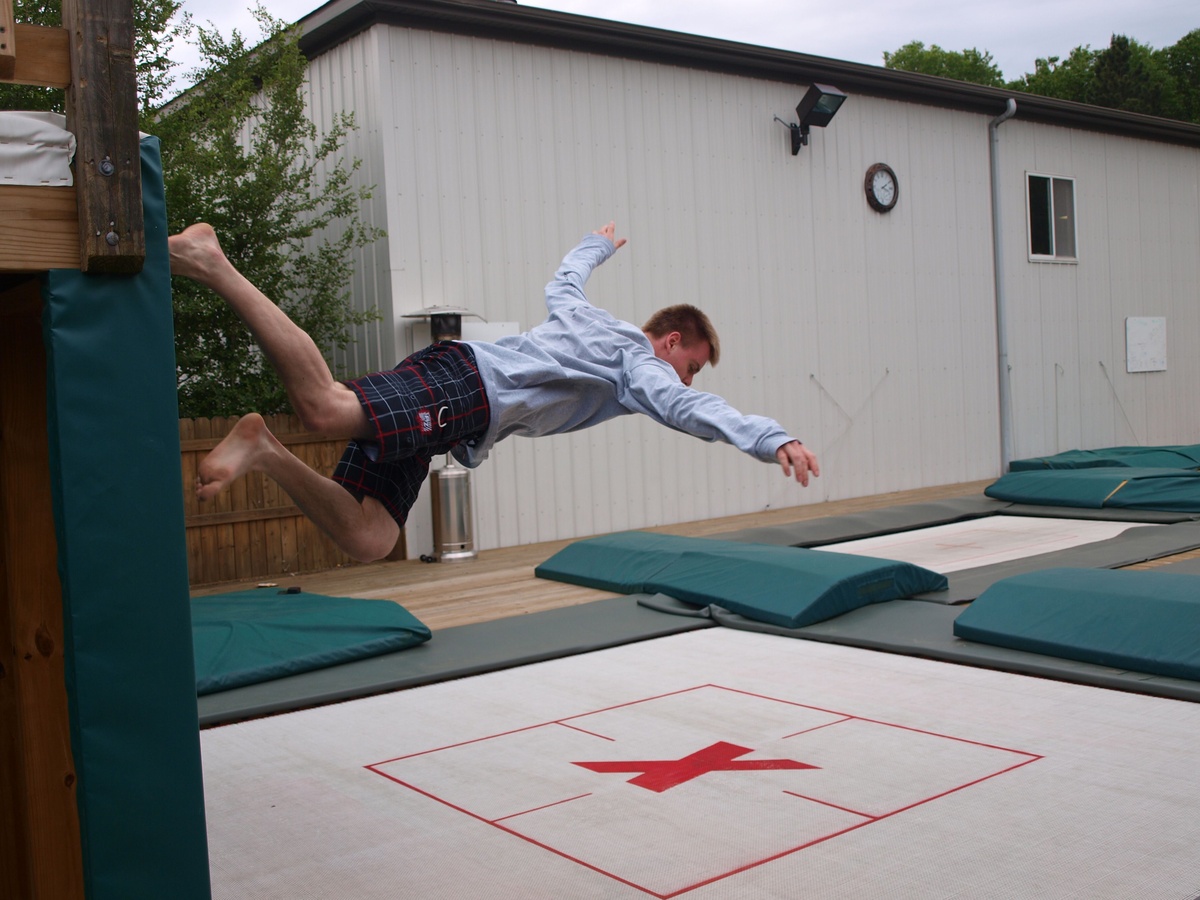







0 thoughts on “How To Do Flips On A Trampoline”